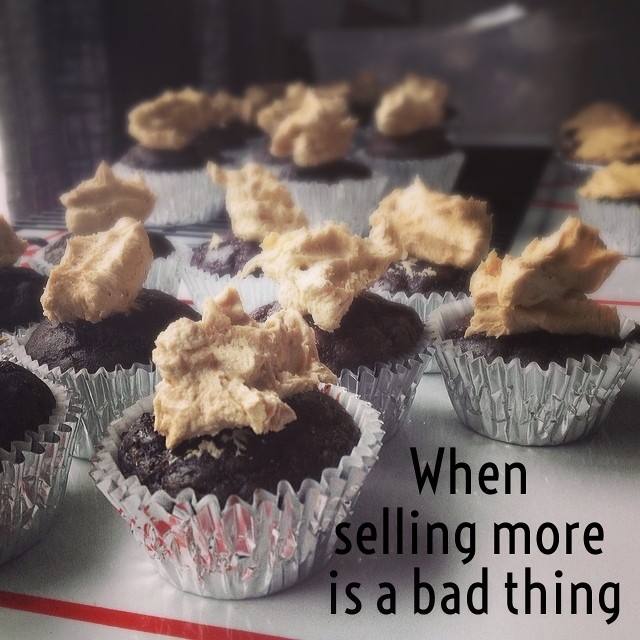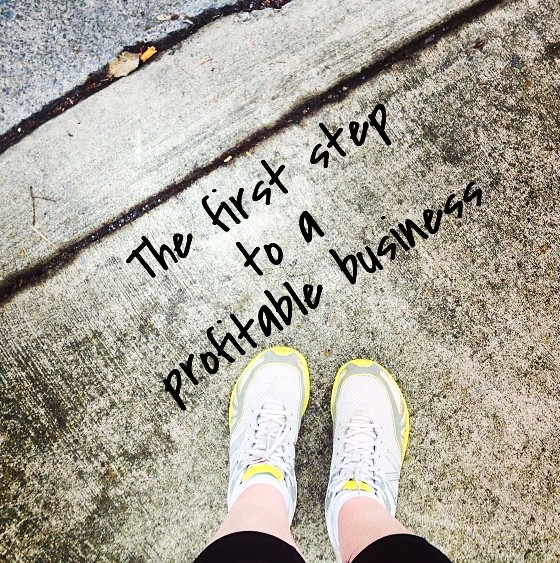This is one of the trickiest things to grasp, but one of the easiest things to fix, in most of the crafty businesses I work with:
Selling more products doesn't necessarily equal making more money.
I think most of you know this, somewhere … but it's so counter-intuitive to how the rest of our monetary world works. At a job, if you work more hours, you make more money. At the store, if you buy more products, you spend more money. But in your small biz, it's possible that having more sales does not create an increase in profit.
And while you know that, have you done the math to really work it out? Have you figured out what your break-even point is – and if you're close to it? Not just for a usual month in your business, but for each craft show and wholesale order?
I'm guessing … not, because I know I didn't when I first started my business. Heck, I even quit my day job and did shows around the country before I really figured out all the ins and outs of my profit margin.
It's easy to skip this because it's easy to sucked into the simplicity of what a zillion articles tell us: more sales = better. When that (more sales) becomes your goal, it's easy to forget all about profit margins and expenses and do whatever it takes to sell more products. You make shipping free, you discount heavily, you throw in extras and specials and fanciness. And you sell a big pile of products – but you don't have any money.
This frustration, from successful sellers, is something I've been hearing for the last three years. But honestly, I resisted doing anything more than having deep (somewhat uncomfortable) conversations in the Starship. Because I'm not accountant. and I don't like math. And I still haven't figured out how to pay my estimated quarterly taxes in a way that doesn't leave me with a big tax bill at the end of the year (because I do make a profit, which means I do owe taxes!).
But the more I've talked about this over the last year, with online and traditional crafters, the more I've come to realize that this is exactly why I need to talk about it. Because if I – math-avoiding, mistake-making, bold explorer – figured it out but I don't talk about it, we might just keep going on thinking that more sales = better, and that only math-geniuses, accountants and non-creatives have to do the work of finding out what makes their business profitable.
And that's dis-empowering and discouraging. If I figured it out, then you can too.
We – artists, writers, makers, and designers – we deserve to live comfortably with our work. We are capable and smart and can figure this out, if only we know where to start.
So that's what we're going to do in Pay Yourself. We're going to find your numbers: the profit of each product and the profit/expense of your entire business. And then we'll use those numbers to make good decisions in the future.
In the last year of teaching this class online and in person, I've seen this material transform businesses. From a full-time artist who changed the galleries she works with to a yarn-maker who shifted her focus, to a maker who cut back on craft shows in order to do more wholesaling (and found more profit). I was convinced by their successes to offer this live online again and to make it even better – to reshoot all the videos, update the worksheets, and offer it in a self-paced e-course.
The class is now available as a self-paced e-course – every lesson will be delivered to you, when you're ready for it. You can read more about the class and register for it here: https://taraswiger.com/product/pay/.



